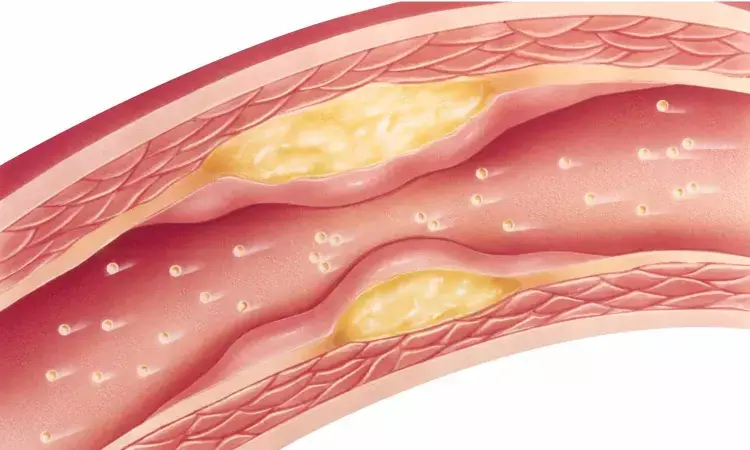- Home
- Medical news & Guidelines
- Anesthesiology
- Cardiology and CTVS
- Critical Care
- Dentistry
- Dermatology
- Diabetes and Endocrinology
- ENT
- Gastroenterology
- Medicine
- Nephrology
- Neurology
- Obstretics-Gynaecology
- Oncology
- Ophthalmology
- Orthopaedics
- Pediatrics-Neonatology
- Psychiatry
- Pulmonology
- Radiology
- Surgery
- Urology
- Laboratory Medicine
- Diet
- Nursing
- Paramedical
- Physiotherapy
- Health news
- Fact Check
- Bone Health Fact Check
- Brain Health Fact Check
- Cancer Related Fact Check
- Child Care Fact Check
- Dental and oral health fact check
- Diabetes and metabolic health fact check
- Diet and Nutrition Fact Check
- Eye and ENT Care Fact Check
- Fitness fact check
- Gut health fact check
- Heart health fact check
- Kidney health fact check
- Medical education fact check
- Men's health fact check
- Respiratory fact check
- Skin and hair care fact check
- Vaccine and Immunization fact check
- Women's health fact check
- AYUSH
- State News
- Andaman and Nicobar Islands
- Andhra Pradesh
- Arunachal Pradesh
- Assam
- Bihar
- Chandigarh
- Chattisgarh
- Dadra and Nagar Haveli
- Daman and Diu
- Delhi
- Goa
- Gujarat
- Haryana
- Himachal Pradesh
- Jammu & Kashmir
- Jharkhand
- Karnataka
- Kerala
- Ladakh
- Lakshadweep
- Madhya Pradesh
- Maharashtra
- Manipur
- Meghalaya
- Mizoram
- Nagaland
- Odisha
- Puducherry
- Punjab
- Rajasthan
- Sikkim
- Tamil Nadu
- Telangana
- Tripura
- Uttar Pradesh
- Uttrakhand
- West Bengal
- Medical Education
- Industry
Genetic testing can accurately detect lipoprotein(a) to assess high CVD risk: JAMA

Genetic risk assessment with lipoprotein(a) at middle-age can be done with direct measurement or an LPA GRS (genetic risk score).
UK: Lipoprotein(a) can be accurately detected by genetic testing as efficiently as from conventional laboratory measurement, a recent study in the journal JAMA Cardiology has found. Elevated levels of the little known lipoprotein(a) in the blood put people at high risk of cardiovascular disease (CVD). This may help physicians to identify candidates for treatment (such as statin) or for ongoing trials of new medicines.
The findings are particularly important for expanding genetic research biobanks and for millions of people who use direct-to-consumer genetic testing kits.
Lipoprotein(a) is a highly heritable biomarker independently associated with atherosclerotic cardiovascular disease (ASCVD). It is not clear whether genetic factors associated with lipoprotein(a) or measured lipoprotein(a) can provide comparable or additional prognostic information for primary prevention. Mark Trinder, The University of British Columbia, Vancouver, British Columbia, Canada, and colleagues determined whether a GRS comprising 43 variants at the LPA gene, which encodes apolipoprotein(a), has clinical utility in assessing ASCVD risk compared with and in addition to lipoprotein(a) measurement.
The UK Biobank is a prospective observational study comprising approx 500 000 volunteers (aged 40 to 69 years). They were recruited from 22 sites across the United Kingdom between 2006 and 2010. An LPA GRS was calculated for 374 099 unrelated individuals with array-derived genotypes and lipoprotein(a) measures using externally derived weights. Data were analyzed from April 2020 to March 2020.
The mean age of the overall study population was 57.6 years, and 204 355 individuals were female (54.6%).
The researchers estimated the associations between measured lipoprotein(a) and LPA GRS with the ASCVD (peripheral arterial disease, coronary artery disease, myocardial infarction, ischemic stroke, and cardiovascular mortality) incidence using Cox proportional hazards models. To determine the utility of using measured lipoprotein(a) and LPA GRS as risk enhancers for ASCVD, the researchers assessed the potential improvement in ASCVD risk discrimination by QRISK3 and Pooled Cohort Equations among individuals with borderline to intermediate risk (n = 113 703 and 144 350, respectively).
Key findings of the study include:
- During a median follow-up of 11.1 years (interquartile range, 1.4 years), 15 444 individuals developed an incident ASCVD event (5.1%).
- The LPA GRS explained approximately 60% of the variation in measured lipoprotein(a) for White/European individuals.
- Independently, both lipoprotein(a) and LPA GRS were associated with incident, composite ASCVD (hazard ratio per 120 nmol/L increase, 1.26 vs hazard ratio, 1.29).
- The association between LPA GRS and ASCVD was substantially attenuated after adjusting for measured lipoprotein(a).
- Adding measured lipoprotein(a) or LPA GRS to QRISK3 provided modest improvements to the risk discrimination of incident ASCVD events (area under the receiver operating curve, 0.640 vs 0.64).
"When indicated, cardiovascular risk assessment with lipoprotein(a) at middle-age may include direct measurement or an LPA GRS," concluded the authors.
The study, "Clinical Utility of Lipoprotein(a) and LPA Genetic Risk Score in Risk Prediction of Incident Atherosclerotic Cardiovascular Disease," is published in the journal JAMA Cardiology.
DOI: https://jamanetwork.com/journals/jamacardiology/fullarticle/2771455
Meghna A Singhania is the founder and Editor-in-Chief at Medical Dialogues. An Economics graduate from Delhi University and a post graduate from London School of Economics and Political Science, her key research interest lies in health economics, and policy making in health and medical sector in the country. She is a member of the Association of Healthcare Journalists. She can be contacted at meghna@medicaldialogues.in. Contact no. 011-43720751
Dr Kamal Kant Kohli-MBBS, DTCD- a chest specialist with more than 30 years of practice and a flair for writing clinical articles, Dr Kamal Kant Kohli joined Medical Dialogues as a Chief Editor of Medical News. Besides writing articles, as an editor, he proofreads and verifies all the medical content published on Medical Dialogues including those coming from journals, studies,medical conferences,guidelines etc. Email: drkohli@medicaldialogues.in. Contact no. 011-43720751


